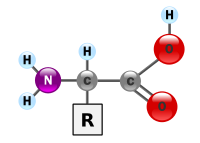
Photo from wikipedia
An 8-week feeding trial was conducted to evaluate the optimum dietary protein to lipid ratio (P/L) for Starry flounder Platichthys stellatus (30.7 ± 0.7 g initial weight). Nine fishmeal-based diets with three protein… Click to show full abstract
An 8-week feeding trial was conducted to evaluate the optimum dietary protein to lipid ratio (P/L) for Starry flounder Platichthys stellatus (30.7 ± 0.7 g initial weight). Nine fishmeal-based diets with three protein levels (40%, 45% and 50%) and three lipid levels (8%, 11% and 14%) were fed to 30 fish in triplicate. Results showed that the growth performance was affected by dietary P/L ratio significantly, and the best weight gain rate, specific growth rate and feed conversion ratio were appeared at fish fed P45L14 and P50L11 diets. Apparent digestibility coefficient of protein was increased with increasing dietary lipid, but lipid digestibility was decreased by dietary lipid. Lipid deposition in tissues was increased with increasing dietary lipid at each protein level and was higher for the lower protein diets. In liver, the per cent of both eicosapentaenoic acid and docosahexaenoic acid were increased by dietary protein. High dietary protein level (50%) at high lipid level (14%) increased arachidonic acid significantly. Aspartate aminotransferase and alanine aminotransferase were affected significantly by dietary P/L ratios. High density lipoprotein cholesterol and total cholesterol of 45% protein groups were significantly higher than others. The study revealed that the optimum dietary protein to lipid ratio for starry flounder was P45L14 or P50L11, or P/E ratios were 25.49 and 27.70 mg protein kJ−1 gross energy respectively.
Journal Title: Aquaculture Research
Year Published: 2017
Link to full text (if available)
Share on Social Media: Sign Up to like & get
recommendations!